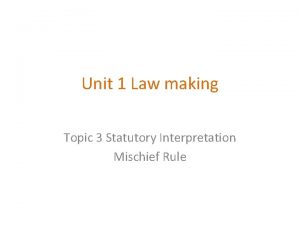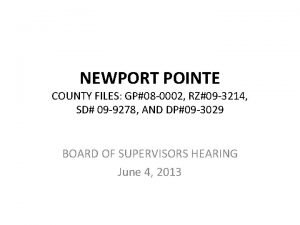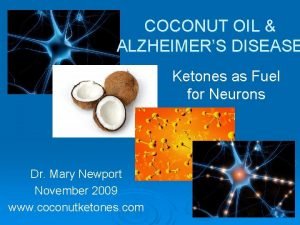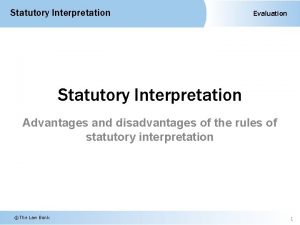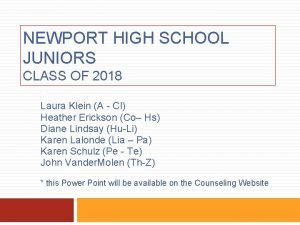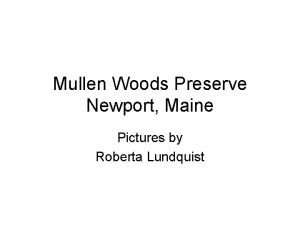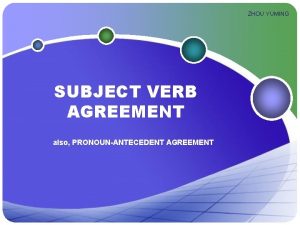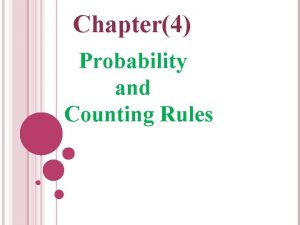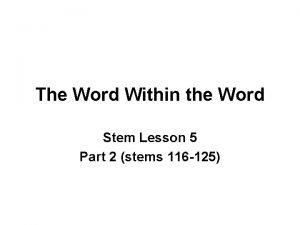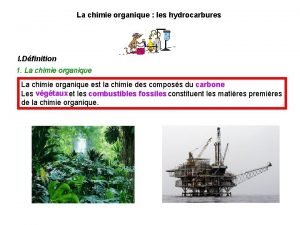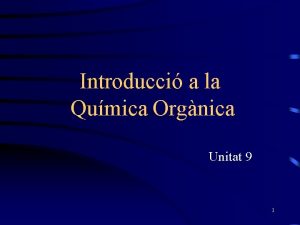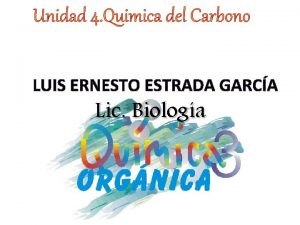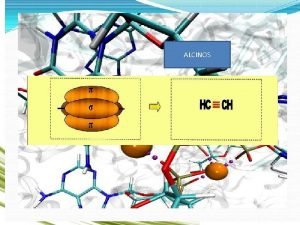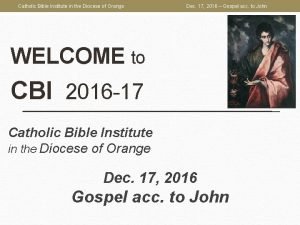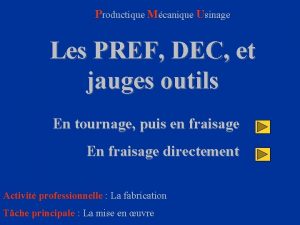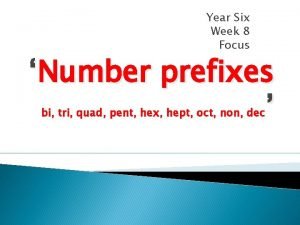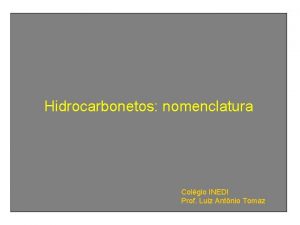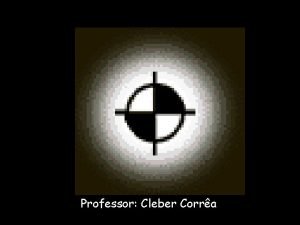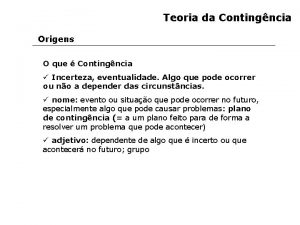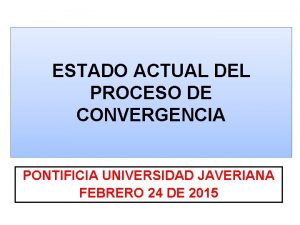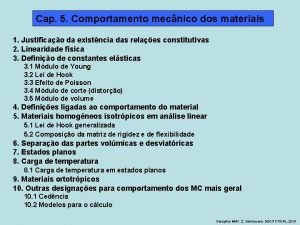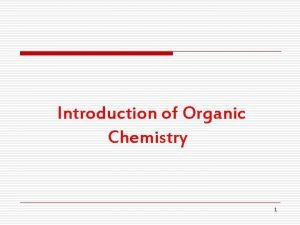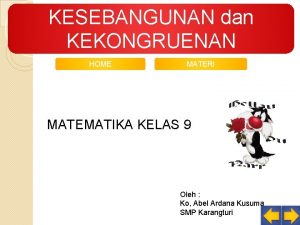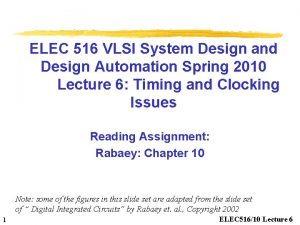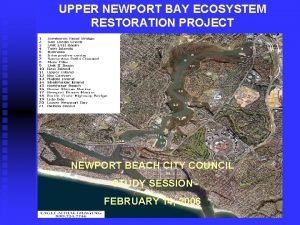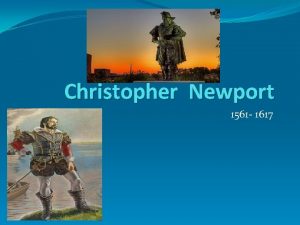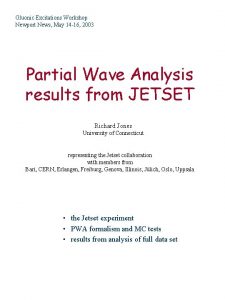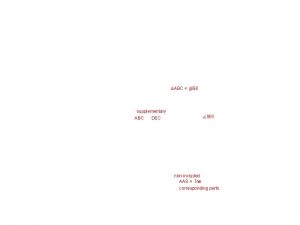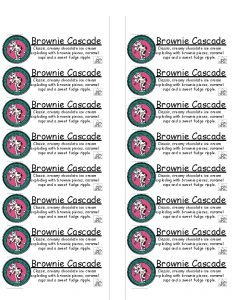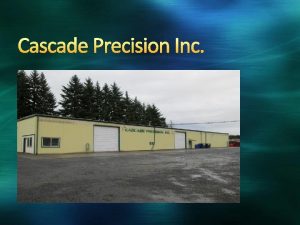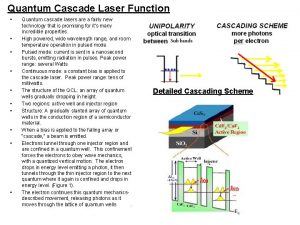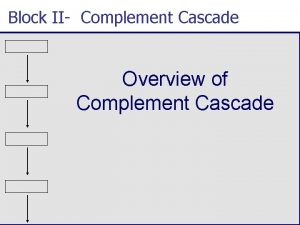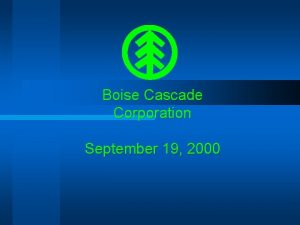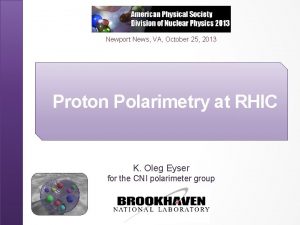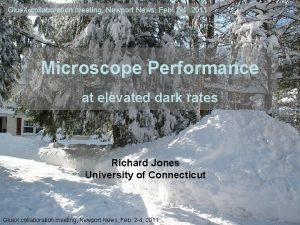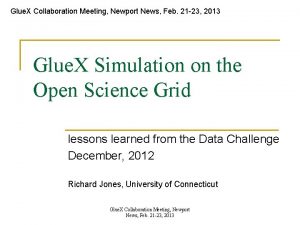Cascade Workshop Newport News Dec 1 3 2005





































- Slides: 37

Cascade Workshop, Newport News, Dec. 1 -3 2005 The Glue. X Experiment Searching for gluonic excitations in the light meson spectrum using photoproduction Richard Jones University of Connecticut

Outline n n n Motivation ¨ gluonic excitations in QCD ¨ hybrid mesons ¨ photoproduction Experimental design ¨ photon beam ¨ detector Analysis and sensitivity ¨ n PWA Baryon spectroscopy with Glue. X? 2

What is Glue. X? A new meson spectroscopy experiment at Jefferson Lab which requires: Barrel Calorimeter q the 12 Ge. V upgrade q a new experimental hall Forward Calorimeter Solenoid q a polarized photon beam q a multi-particle spectrometer q a new collaboration, presently ~80 physicists ~30 institutions Tracking Target Time of Cerenkov Flight Counter 3

Motivation: gluonic excitations Consider QCD with only heavy quarks: n the light mesons are glueballs V 0(QQ) 2. 0 (Ge. V) n qq mesons have the conventional positronium low-energy spectrum glueball decay threshold 1. 0 n spectrum is distorted at higher excitations by a linear potential n for r >> 0. 5 fm a tube of gluonic flux forms between q and q 0. 0 0. 4 0. 8 1. 2 1. 6 r (fm) 4

Motivation: gluonic excitations Consider QCD with only heavy quarks: n gluonic excitations give rise to new potential surfaces n for r >> r 0 gluonic excitations behave like flux tube oscillations n inspires the flux tube model 5

Motivation: normal vs hybrid mesons excited flux-tube m=1 ground-state flux-tube m=0 normal mesons CP = (-1)L+S (-1)L+1 = (-1)S+1 Flux-tube Model m=0 CP=(-1)S+1 m=1 CP=(-1)S 1 -+ or 1+- S=0, L=0 S=1, L=0 J=1 CP=+ J=1 CP=- JPC=1++, 1 -- JPC = 0 -+, 0+1 -+, 1+- (not exotic) exotic 2 -+, 2+6

Motivation: hybrid masses Flux-tube model: 8 degenerate nonets 1++, 1 -- 0 -+, 0+-, 1 -+, 1+-, 2 -+, 2+- ~1. 9 Ge. V/c 2 S=0 S=1 Lattice calculations --- 1 -+ nonet is the lightest UKQCD (97) 1. 87 0. 20 ~2. 0 Ge. V/c 2 MILC (97) 1. 97 0. 30 MILC (99) 2. 11 0. 10 1 -+ Splitting 0. 20 Lacock (99) 1. 90 0. 20 0+Mei(03) 2. 01 0. 10 +2 Bernard (04) 1. 79 0. 14 In the charmonium sector: 1 -+ 4. 39 0. 08 Splitting = 0. 20 0+4. 61 0. 11 7

Experiment: hybrid searches Most of what is presently known about the hybrid spectrum has come from one experiment: BNL E 852 - p X n at 18 Ge. V ¨ 1(1400) – seen in ¨ 1(1600) – seen in , f 1 , b 1 , ’ ¨ 1(2000) – seen in f 1 , b 1 General observations regarding these analyses ¨ exotic intensities are typically 1/10 dominant ones ¨ requires large samples (~106 in exclusive channels) ¨ requires good acceptance (uniform and well-understood) ¨ requires access to high-multiplicity final states 8

Experiment: hybrid photoproduction Events/50 Me. V/c 2 Unexplored territory with unique advantages for hybrid search 28 SLAC 4 1. 0 BNL ca. 1998 @ 18 Ge. V SLAC 1. 5 2. 0 2. 5 ca. 1993 @ 19 Ge. V 9

Experiment: hybrid photoproduction _ q beam _ q q before q _ q A pion or kaon beam, when scattering occurs, can have its flux tube excited Data from these reactions show evidence for gluonic excitations (small part of cross section) Quark spins aligned after _ q before beam after q q or� Quark spins anti-aligned Almost no data is available in the mass region where we expect to find exotic hybrids when flux tube is excited 10

Experiment: photoproduction phenomemology , , . . . X final state forward system general framework: Ø VMD in initial state Ø t-channel exchange N N 11

Glue. X Experiment n n 9 Ge. V gamma beam Me. V energy resolution high intensity (108 /s) linear polarization Coherent Bremsstrahlung Photon Beam www. gluex. org Lead Glass Detector Barrel Calorimeter Solenoid Note that tagger is 80 m upstream of detector Tracking Target Time of Flight Cerenkov Counter 12 Ge. V electrons are required In order to produce a 9 Ge. V photon beam with a significant degree of linear polarization Electron Beam from CEBAF 12

Glue. X Experiment: beam polarization Gottfried-Jackson frame X for R with J = 0 R photon J=0– or 0+ exchange particle Suppose we want to distinguish the exchange: O+ from 0 - ( AN from AU ) For circular polarization: q With linear polarization we can isolate AN from AU q Circular polarization gives access to their interference 13

Glue. X Experiment: photon beam photons out flux The coherent bremsstrahlung technique provides requisite energy, flux and polarization 12 Ge. V electrons Incoherent & coherent spectrum 40% polarization in peak collimated electrons in spectrometer photon energy (Ge. V) diamond crystal tagged with 0. 1% resolution 14

Glue. X Experiment: detector design The Glue. X detector design has been driven by the need to carry out amplitude analysis. , , X p 1 1 ’ 1 b 2 h’ 2 b 0 h’ 0 1−+ 2+− 0+− 1 → a+1 - → ( o +)( -) → + - + all charged h 0 → bo 1 o → ( o) → + - many photons n, p h’ 2 → K+1 K− → o K+ K− → + −K+K− strange particles Final state particles: ± K ± p n KL 15

Glue. X Experiment: topologies t-channel meson photoproduction (t) ~ e- t X p photons , , pions n, p protons 10 -60 o ~1 Ge. V/c 16

Glue. X Experiment: components Tracking Calorimetry Particle ID 17

Glue. X Experiment: superconducting solenoid LASS Solenoid Superconducting 2. 24 T Used in Los Alamos MEGA Experiment. Moved to IUCF for refurbishing Oct. 2003. 18

Glue. X Experiment: calorimetry Forward Calorimeter LGD • Existing lead glass detector • 2500 blocks • E/E · 0. 036+0. 073/E 1/2 • 100 Me. V < E < 8 Ge. V Barrel Calorimeter • Lead-sci-fiber sandwich • • BCAL 4 m long cylinder E/E · 0. 020+0. 05/E 1/2 ~20 Me. V < E < 3 Ge. V 200 ps timing resolution – z-position of shower – time-of-flight Upstream Photon Veto UPV • Veto photons • 20 Me. V < E < 300 Me. V 19

Glue. X Experiment: calorimetry 20

Glue. X Experiment: tracking Forward Region FDC • 4 packages of planar drift chambers • • anode + cathode readout six planes per package xy=150 m active close to the beam line. Central Region CDC • cylindrical straw-tube chamber • • • 23 layers from 14 cm to 58 cm 6 o stereo layers r =150 m z = 2 mm minimize downstream endplate d. E/dx for p<450 Me. V/c Necessary for protons 21

Glue. X Experiment: tracking Forward Region FDC • 4 packages of planar drift chambers • • anode + cathode readout six planes per package xy=150 m active close to the beam line. Central Region CDC • cylindrical straw-tube chamber • • • 23 layers from 14 cm to 58 cm 6 o stereo layers r =150 m z = 2 mm minimize downstream endplate d. E/dx for p<450 Me. V/c Necessary for protons 22

Glue. X Experiment: tracking 23

Glue. X Experiment: particle identification Time-of-flight Systems • Forward tof ~80 ps • BCAL ~200 ps • Start counter d. E/dx Information • d. E/dx in both FDC and CDC • p<450 Me. V/c Cherenkov Detector • DIRC K p separation 24

Glue. X Experiment: particle identification The documentation discusses both a DIRC design and an atmospheric pressure Gas Cherenkov design We do not believe that the latter will satisfy the physics requirements of Glue. X. The DIRC design will accomplish the physics goals of the Glue. X experiment. There are collaborators interested in pursuing the DIRC design and construction. 25

Glue. X Experiment: particle identification FTOF BCAL Separation from individual systems Cherenkov DIRC CDC d. E/dx 26

Glue. X Experiment: event rates At 107, the total hadronic rate is 37 k. Hz Initially tagged /s the tagged hadronic rate is 1. 4 k. Hz 8 Design detector for 10 At 108, the total hadronic rate is 370 k. Hz the tagged hadronic rate is 14 k. Hz JLab CLAS runs at 107 already. 107 Running at 107 for 1 year will exceed current photoproduction data by several orders of magnitude and will exceed current data. 27

Glue. X Experiment: acceptance ~ 0. 99 Very uniform over PWA angles ~ 0. 98 Acceptance p à 1 p à + - 4 p cos GJ 28

Glue. X Experiment: acceptance ~ 0. 99 Very uniform over PWA angles ~ 0. 98 Acceptance p à 1 p à 8 p cos GJ 29

Glue. X Analysis: test of PWA Double-blind study of 3 final states Glue. X Monte Carlo X p p à +n à + + -n n a 2 1 2 à + 0 0 n h=+1 f. GJ h=-1 h=+1 m 3 [Ge. V/c 2] Polarization effects! 30

Glue. X Analysis: test of PWA If acceptance is not well understood, the PWA will “leak” one wave into another. Break the Glue. X detector in MC: • distort B-field • degrade resolution • change hole sizes • distort beam energy neutral charged Largest leakage is ~ 1/2% of a strong signal: a 1(1++) à 1(1 -+) 31

Glue. X Analysis: summary q Double-blind test showed capability to pull out signals that are ~1% of a strong signal using PWA. q It is extremely difficult to produce leakage that is as large as 1%. q Assuming a good theoretical understanding, if hybrids are present at ~1% of normal mesons strength, this detector will be able to find them. 32

Baryon spectroscopy with Glue. X From the Glue. X statement to the Jefferson Lab PAC 27 (Jan. 05) is an “electronic bubble chamber. ” The interplay + Glue. X between excited meson and baryon resonance production will be studied – with excellent acceptance for both. will also search in the hyperon and cascade sectors + Glue. X with the potential to determine spin and parity of these states. Thus far, the design effort has focused on optimizing the experiment for meson spectroscopy. How would that apparatus function as an excited baryon spectrometer? 33

Baryon spectroscopy with Glue. X Unique features of cascade decays: ü large particle multiplicites ü both neutral and charged ü need good K/ separation ü acceptance at low momenta, wide angles ü good momentum resolution (narrow peaks) ★ energy greater than 10 Ge. V ★ detached vertices Take an example: a medium-difficult final state p à K 0 K*+ X*0 à 0 0 K+ 0 L K 0 = 5 0 - K+ p 34

Baryon spectroscopy with Glue. X p à K 0 K*+ X*0 à 0 0 K+ 0 L K 0 = 5 0 - K+ p Vary the mass Watch production rate as function of beam energy Glue. X beam energy range 8. 4 - 9. 0 Ge. V driven by need for polarization Baryon spectroscopy has no use for beam polarization => run near the endpoint 35

Finding “Cascaderium” with Glue. X d à 2 K+ 2 K 0 [ X 0 X- ] a à 2 K+ 2 K 0 [ X 0 X- ] n p Whatever worries one may have about rates for this process in Glue. X… beam energy is probably not going to be a problem. 36

37
 Hampton community service board
Hampton community service board Obici physical therapy
Obici physical therapy Corkery v carpenter (1951)
Corkery v carpenter (1951) Newport pointe discovery bay
Newport pointe discovery bay Dr. mary newport coconut oil video
Dr. mary newport coconut oil video Newport high school clubs
Newport high school clubs Advantages of purposive approach
Advantages of purposive approach Louise newport
Louise newport Newport bsd
Newport bsd Newport beach maine
Newport beach maine Newport beach business license
Newport beach business license All that glitters ______ not gold
All that glitters ______ not gold What are hard news
What are hard news A television news director wishes to use three news stories
A television news director wishes to use three news stories Système impérial
Système impérial Words with the stem helio
Words with the stem helio Nomi di terza declinazione
Nomi di terza declinazione La formule brute des alcanes
La formule brute des alcanes Butanoat de metil
Butanoat de metil Met et prop but pent hex hept oct non dec undec
Met et prop but pent hex hept oct non dec undec Nys decals login
Nys decals login Met et prop but pent hex hept oct non dec
Met et prop but pent hex hept oct non dec Pref dec
Pref dec Dec 17
Dec 17 Dec usinage
Dec usinage Mono bi tri quad
Mono bi tri quad Nomenclatura de hidrocarbonetos ramificados
Nomenclatura de hidrocarbonetos ramificados Meth eth prop
Meth eth prop 8th dec 2014
8th dec 2014 Propil
Propil Modelo de lawler
Modelo de lawler Dec. 3022/13
Dec. 3022/13 Dec fct unl
Dec fct unl What is chemistry
What is chemistry Met et prop but pent hex hept oct
Met et prop but pent hex hept oct Ra dec
Ra dec Materi kesebangunan dan kongruensi kelas 9
Materi kesebangunan dan kongruensi kelas 9 Elec
Elec


